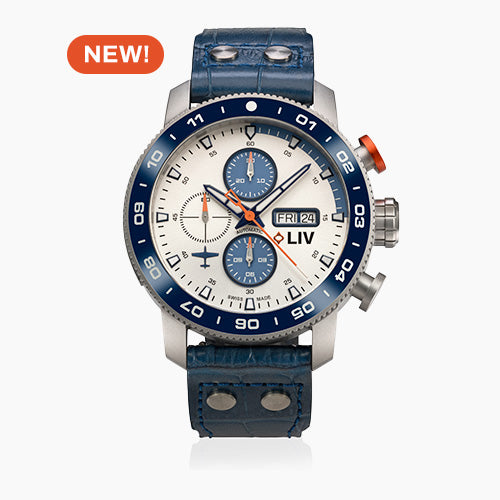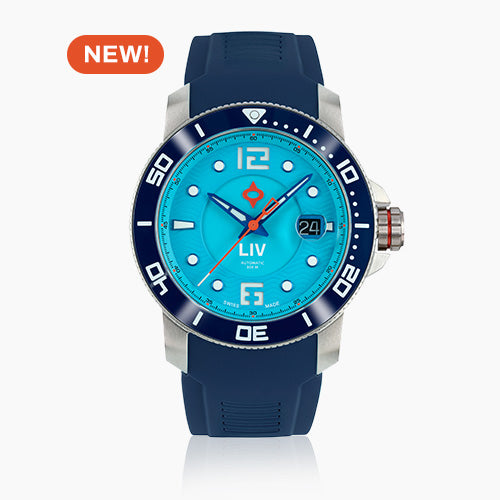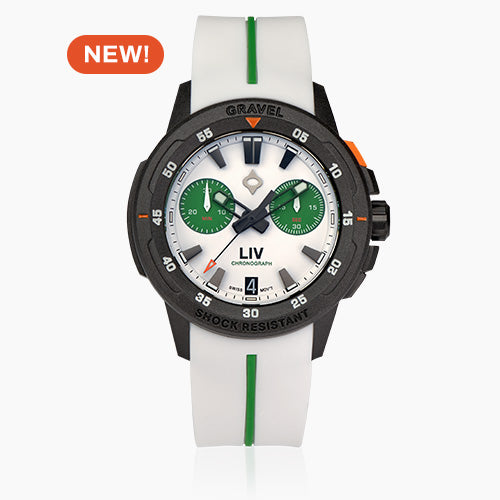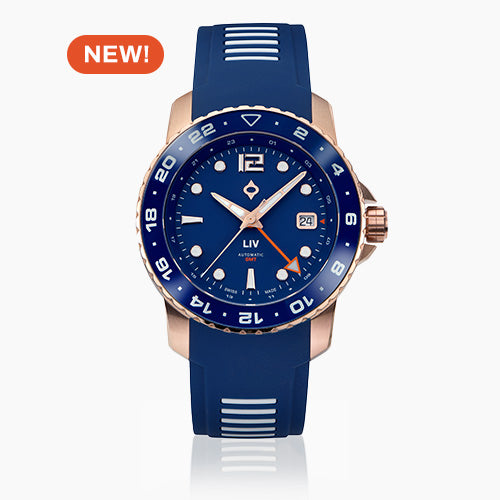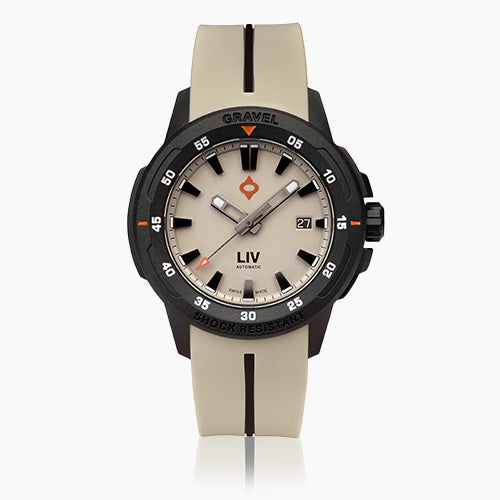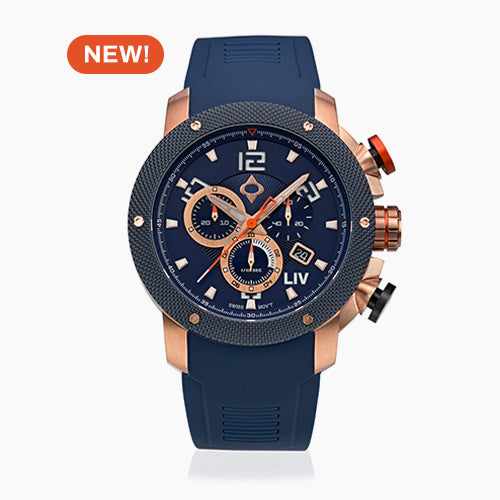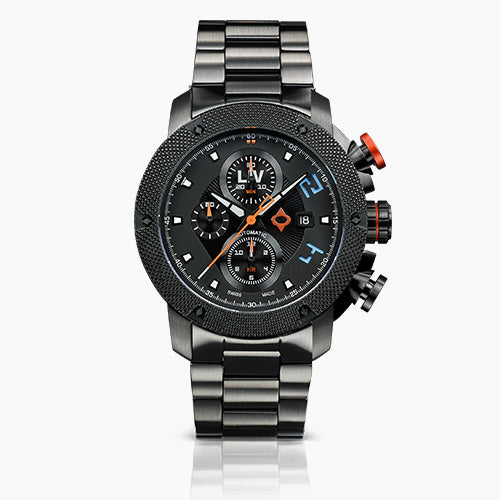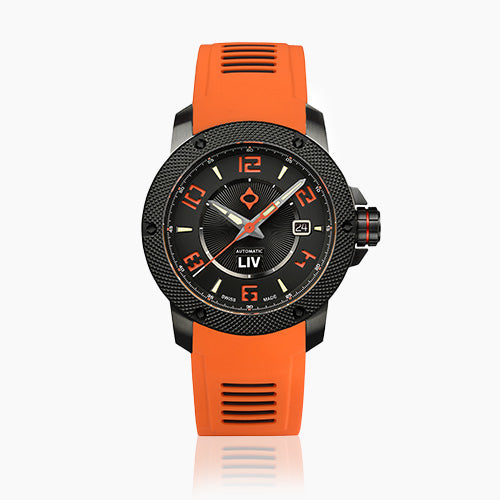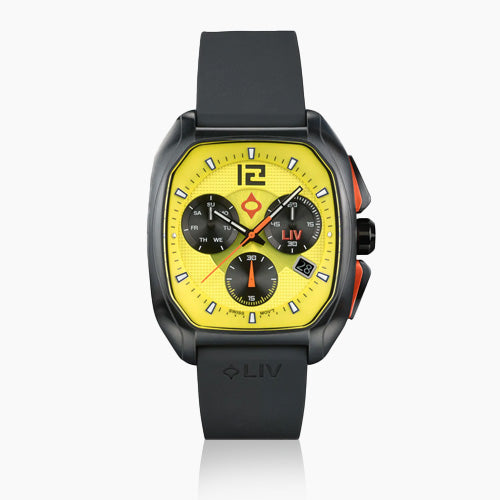
A Brief History of the Dive Watch
Share
THE EARLY NEED FOR A DIVE WATCH
Wristwatches have been in use since the late 1500s. However, they were most commonly worn by women because of their small size and the fact that women's clothing did not have the convenience of pockets that men's pants did. As a result, men favored the pocket watch until the early part of the 20th century.
The need for precision in military actions saw the first widespread use of wristwatches by men in the late 19th century. Perhaps it was this exposure to wristwatches that stimulated interest in them by non-military men.

An unfortunate aspect of the early wristwatch was its susceptibility to water and dust damage. This was due to the fact that the case components were pressed together with a rubber gasket as the only nod to keeping the elements out.
Enter Hans Wildorf, founder of Rolex.
Mr. Wildorf created a unique case design where the case components were screwed directly to the middle case, a practice common to many premium watches today. This created a water (and dust) resistant seal, a huge innovation at the time.
He is said to have named this design the Oyster because, like oysters, special tools were required to open the case.
A BRIEF TIMELINE OF THE DIVE WATCH
While it was a commercial opportunity that led to the introduction of the first "dive watch," it would be military needs that spurred further development. What follows is a brief timeline of significant events and watch introductions in the evolution of the dive watch. Note that this timeline is a compilation of various sources, the dates of which vary. If anyone was missed, it was unintentional.
1926 - The Rolex Oyster is introduced
1932 - The Omega Marine hits the market
1936 - The Panerai Radiomir is designed for the elite Italian military underwater service
1953 - Blancpain introduces their Fifty Fathoms
1960 - Rolex releases the Deep Sea Special
1965 - Seiko brings Japan into the game with their 62MAS
1969 - The Doxa Sub 300T makes a debut
1982 - The ISO 6245 Dive Watch Standard is published
1983 - First dive computer introduced
1990s - The competition for depth ratings heats up and continues to the present.
2009 - CX Swiss Military markets the 20,000T, boasting a water-resistance of 20,000 ft.
Where does this timeline leave today's watch freaks, collectors, and aficionados? In a world of wonder. Capable, affordable, and reliable options that meet the ISO 6245 standards abound. No collector has an excuse to leave this iconic style out of their collection. Unless they are afflicted with Aquaphobia. In that case, you get a pass.

"Historically, the dive watch was the first true sport utility watch, and this style gave birth to a whole new family of Swiss sports watches. With the GX Divers, we are proud to be a part of dive watch history."
- Chaz Chazanow
Co-Founder at LIV Watches
WHAT IS A DIVE WATCH?
The diving, divers, or dive watch is and has been one of the most popular types of wristwatch people buy. Despite this continuing popularity, it might be safe to say that the vast majority of these watches will never be used for their intended purpose, providing safety to a diver while they are at depth. What is it that makes a watch a dive watch? The International Organization for Standardization (ISO) has established the criteria for a watch, or timepiece, to be classified as a dive watch, ISO 6425. Compliance is voluntary.

Here are four minimum characteristics that you should look for in choosing a dive watch for your collection, not listed in any particular order.
1. Water resistance to 100 m (300 feet), as measured using specialized equipment.
2. Equipped with a dive (elapsed) time indicator. Commonly a unidirectional rotating bezel with texture or indentations to facilitate operation wearing diving gloves.
3. Adequate readability/visibility at 25 cm (9.8 in) in total darkness, achieved by the use of lume material on the bezel, watch hands, and watch face.
4. Corrosion-resistant case and strap materials, especially for saltwater diving. 316L typically meets the necessary standards here.
There are more characteristics outlined in ISO 6425, but making sure your watch has at least these four will meet most casual diving requirements.
WHAT MATERIALS AND CONSTRUCTION TECHNIQUES ARE BEST FOR DIVE WATCHES?
For the cases, 316L stainless steel is the case material most commonly used. However, other materials including ceramic and polymers are also offered. The key is to use a material that will protect the watch from damage and water intrusion at its rated depth.
An integral part of the case design is its gaskets. To resist the amount of pressure water exerts on the watch, extensive use of gaskets is necessary. Gaskets are used around the back of the case and around the crown (and pushers if you are wearing a chronograph).
The best watches will also provide screw-down crowns and case backs. This technique provides a superior level of water resistance. A pro tip here is this; if you need to take the back off your watch, replace the gasket to maintain the maximum water resistance.
For the crystals, sapphire or hardened mineral crystal are the best options. Both will resist the effects of seawater and provide a clear view of the watch's display of time functions. Sapphire is more scratch-resistant while mineral crystals offer higher impact resistance.
You may also encounter plastics. From the perspective of this writer, you should stay away from anything that will scratch easily or potentially react with seawater and cloud up.
For the bezel, a material matching the case is the most common solution. Look for vertical ridges (like the edge of a coin), heavy texture, or "cut-outs" around the outside to make it easy to manipulate it while wearing a diving glove. Other excellent materials for the bezel include ceramic and rubber. Materials like this are frequently inlaid into the bezel for additional durability and style. It must be unidirectional and have at least one point of luminescence to mark elapsed time.
Materials used for dive watch straps run the gamut from leather to nylon to silicone to 316L stainless steel. Be sure the strap you select is large enough to allow you to wear it over your dive suit if you typically wear one. Also, be sure the clasp or buckle is robust and not prone to releasing while in use. Nothing is quite as sickening to a watch freak than to see one of their treasured timepieces plummeting into the abyss because the strap came open.

A LIV GX Divers Watch
"The LIV GX Divers is just that perfect watch. We've combined all the best aspects of a true diver's watch and meshed it all together, and now we have one rugged masterpiece."
- Esti Chazanow
Co-Founder at LIV Watches

LUMINESCENCE AND MOVEMENTS
Illuminate me, if you please
A dive watch you cannot see underwater in low and no light isn't worth its salt (oh yes, pun intended). So, the question that dive watchmakers had to answer early on was, "How far does light penetrate under the water?" And, "How do we make it possible for divers to see their watches in darkness?"
The answer to the first question comes from the National Oceanic and Atmospheric Administration (NOAA):
Sunlight entering the water may travel about 1,000 meters (3,280 feet) into the ocean under the right conditions, but there is rarely any significant light beyond 200 meters (656 feet).
The operative phrase here is, "right conditions." Experienced divers understand that light levels drop rapidly due to turbidity of the water, time of day, and so forth. That means their dive watches need to be clearly visible at depths less than 200 meters.
To answer the second question, chemists developed special luminescent compounds. Luminescent materials are pigments that have the ability to store and release light. Like a battery, these pigments "charge" up when exposed to sunlight, and for some, artificial light. They immediately begin releasing the light. However, unless you are in darkness, the human cannot see the glow.
Commonly referred to as lume among watch aficionados, these pigments are available in different colors and levels of brightness. White and green are popular as they are easy to see in darkness. Super-LumiNova is one brand that is known for its outstanding brightness and duration.
At a minimum, lume must be applied to the hour, minute, and second hand and at the "zero" position of the bezel. It is common to apply lume at the hour indices on the dial as well. However, for the purpose of timing a dive, the minimum will serve.
How does a diver gauge elapsed time while under water? Here's how.
1. Make sure to fully "charge" the lume.
2. Determine the length of the dive; i.e., 30, 40, 60 minutes.
3. Just before entering the water, rotate the bezel so the "zero" point lines up with the minute hand.
4. While diving, you can tell how much time has elapsed by comparing the position of the minute hand to the zero point.
The bezel must rotate unidirectionally; typically counter-clockwise. This is a safety feature that prevents the bezel from accidently moving clockwise and providing an inaccurate elapsed time.
Is there a motion for the movement?
Dive watch fans can select from the full range of movement types when picking the watch to accompany them to the depths. These include mechanical (automatic and hand-wound), quartz, and electronic (dive computers). Which of these is best? That depends upon your preference, but here are a few things to consider.
Mechanical movements do not require batteries to operate. Once wound, they provide more than enough power reserve to complete a dive. The automatic movement will constantly replenish its power reserve through the motion of the diver's arm, increasing this option's reliability in the depths.
Quartz movements may offer more features like back-lighting and digital timers. However, these functions require energy that comes from a battery. If the battery dies during the dive, your watch becomes useless. One way around this potential issue is to regularly replace the battery, sooner than its estimated life.
Electronic dive computers are much more sophisticated tools that don't really fit in a discussion of dive watches. These are computers divers use for managing a myriad of factors associated with technical dives. I mention them here for the curious.

Graphic obtained from the National Oceanic and Atmospheric Administration
LIV'S TAKE ON THE CLASSIC DIVER
LIV Watches' diver incorporates classic elements, professional-level performance, and head-turning style. Here is a sampling of these Swiss-made beauties' specifications. Whether or not your plans include a dive to 300 meters, your collection is incomplete without a diver. Let LIV fill that slot in your watch box today.
* 316L stainless steel case
* Screw-down, gasketed, crown, and case back
* Sapphire crystals front and rear
* Premium Swiss ETA 2428-2 automatic movement.*Ceramic and 316L stainless steel, unidirectional bezel
* Extensive amounts of Super-LumiNova BGW9 lume
* 300 meters (1000 feet) water resistance
* Amazing multi-layer dial with elaborate wave patter and precision cutouts at the 12 and 6 o'clock positions
* A full complement of handcrafted straps

LIV GX DIVERS

Movement: 25 Jewel ETA Caliber 2824-2 Swiss automatic, 3-hand Swiss automatic with date, 40-hour power reserve, +/- 5 seconds accuracy
Water resistance: 300 meters (1000 feet)
Case: High-grade 316L stainless steel with skeleton case-back
Crown: Screw down, gasketed, with LIV logo enamel inlay
Crystal: Scratch-resistant sapphire crystal on front and case-back, anti-reflective coating on crystal interior
Dial and hands: Multi-layer wave pattern sandwich dial, steel sword-shaped hands with BGW9 luminescence
Bezel: Ceramic, unidirectional 120 clicks, with BGW9 Super-LumiNova indexes
Bracelet/strap: Fully adjustable 316L stainless steel bracelet with IP coating or high-grade rubber strap (additional strap options available)
Dimensions: Case diameter: 41 mm / Case height: 11.6 mm / Lug width: 22.0 mm /
Height with lug: 50 mm
Warranty: Five-year transferable guarantee against all manufacturer defects
